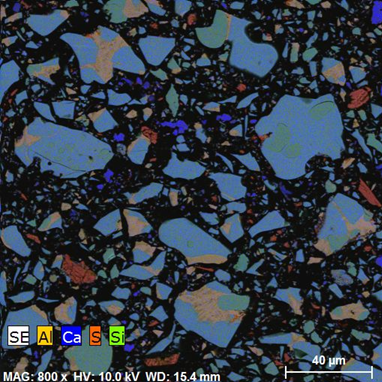
About the Project
The Virtual Cement and Concrete Testing Laboratory (VCCTL) is a computer modeling tool intended to develop and integrate state-of-the-art computational materials science tools into a user-friendly software interface used to model concrete at the microstructural level. The purpose for computational modeling of portland cement concrete hydration is to develop an accurate and expedient virtual rapid prototyping tool that allows for the exploration of the properties of different hypothetical mixture designs incorporating the materials commonly used in concrete. Such a tool could have the potential to dramatically reduce the labor and time associated with development and qualification of concrete mixtures for industry applications.
The potential for the VCCTL to be used as a time and labor saving tool is considerable; however the capabilities and limitations of its functionality remained largely unexplored until recently due to the complex sample preparation and microscopic analysis procedures required to obtain model input data for portland cement. A recent exploratory research program at the University of Florida has developed and refined these cement characterization techniques, improving upon those originally developed by the National Institute of Standards and Technology (NIST), and provided insight into the current capabilities and limitations of the VCCTL. This research focused on the core functionality of the program; exploration of the more sophisticated modeling functionality of the VCCTL is currently underway.
The research involved the integration of the VCCTL into a broader optimization program, which could potentially optimize multiple desirable characteristics of concrete (cost vs. strength, early age strength vs. long term durability, cement content vs. heat release, etc). This initiative requires computational resources beyond the average desktop computer, and has been made possible through the utilization of HiperGator, the supercomputing cluster available at the University of Florida.

Sponsors
- Florida Department of Transportation
Project Manager
- H.D. Deford
Graduate Assistant
- Benjamin Watts
- Chengcheng Tao